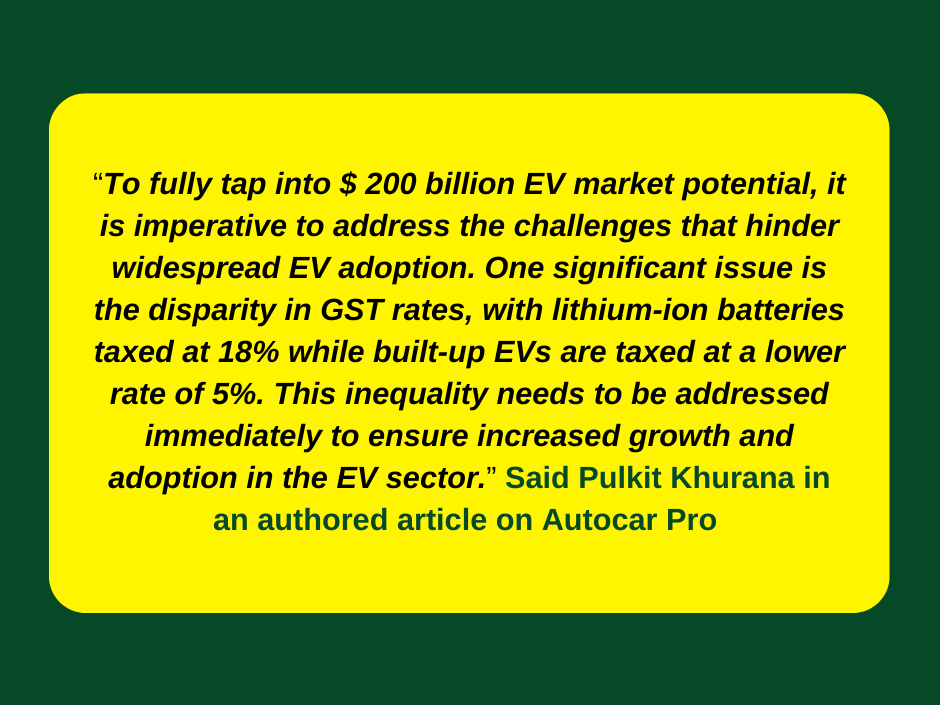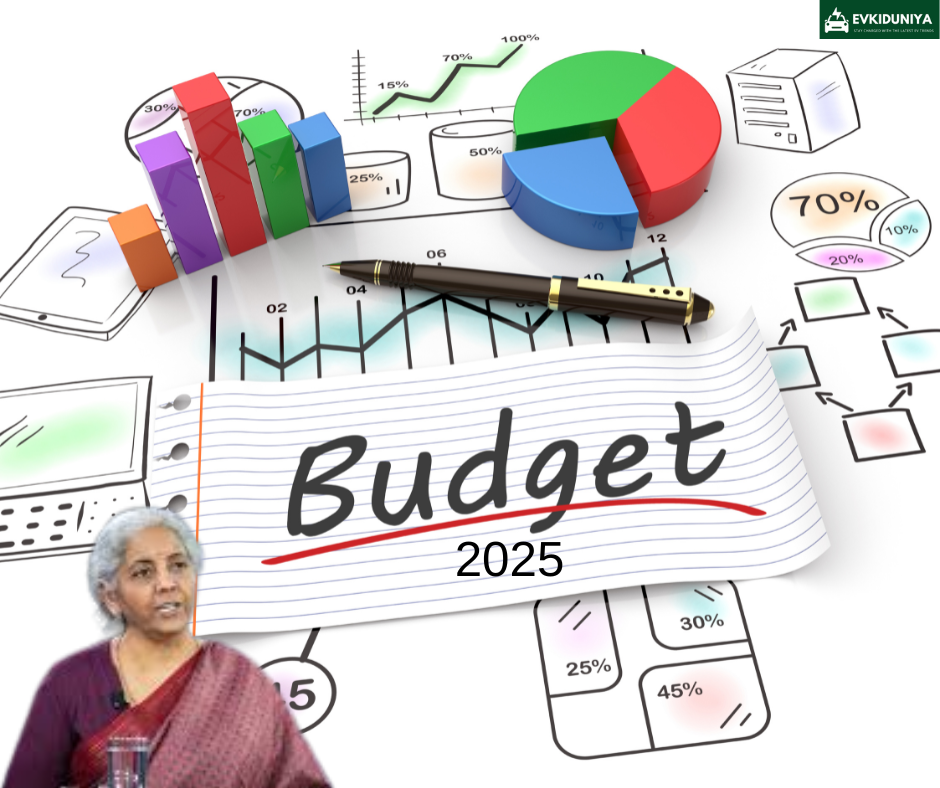India Union Budget 2025: As the much-anticipated budget nears, all eyes turn to Finance Minister Nirmala Sitharaman, who is expected to unveil transformative policies on February 1. Industry leaders anticipate groundbreaking initiatives that will enhance growth, affordability, and accessibility in the EV sector.
The government’s future fiscal policies and incentives are anticipated to be crucial in propelling the transition from fossil fuel-powered vehicles to electric alternatives.
As per Nitin Gadkari, Minister of Road Transport and Highways of India, the Indian electric vehicle market is expected to be valued at 20 lakh crore with the potential to generate around 5 crore jobs across the entire EV ecosystem by 2030. Given that the industry is predicted to expand at this rate, the implementation of programs and policies supporting the EV boom in the Union Budget 2025 may further benefit the sector.
Overcoming Challenges in India’s EV Industry: Expectations from Budget 2025
The Indian EV industry has made significant progress, but it still faces many hurdles such as limited infrastructure and high costs linked with adoption. Therefore it’s critical opportunity to address these crucial measures in upcoming Union Budget 2025 to overcome the issues and accelerate the sector’s growth.
Transitioning from FAME to PM-E Drive
Since its inception in 2015, the FAME – Faster Adoption and Manufacturing of Electric Vehicles program has served as a pillar of India’s EV policy. Significant financial incentives were allocated during FAME-1 and FAME-II, which were extended until May 2024 to promote the use of EVs in the country. FAME II received Rs. 10,000 crore which aided in the expansion of the industry. After it’s conclusion in May 2024, the anticipated FAME-III was replaced by the PM-E drive scheme by Nirmala Sitharaman in July 2024 Budget. The PM-E Drive program, which went into effect in October 2024, intends to lessen the industry’s dependency on subsidies as the market develops.
According to experts, the government may now turn its attention to performance-linked incentives (PLI) for the production of batteries and car parts. Such programs, which would improve domestic manufacturing capacity and lessen reliance on imports, might be included in the Union Budget 2025.
GST Reforms to Make EVs More Affordable
In an effort to achieve parity with other vehicle components, the EV industry has long pushed for GST reductions on EV batteries, seeking parity with other automotive components. A lower GST rate on batteries could substantially reduce production costs, making EVs more affordable for consumers. Pulkit Khurana, co-founder of Battery Smart, has consistently highlighted this need in his authored articles and interviews, advocating for a GST reduction on lithium-ion batteries from 18% to 5%. Whereas FICCI EV Committee Chair Sulajja Firodia Motwarni also suggested GST reduction on charging services from 18 to 5%. Although the GST Council has yet to act on these recommendations, such measures could be instrumental in driving widespread adoption.

EV Infrastructure Strengthening
A strong infrastructure for charging EVs is essential to the widespread adoption of electric vehicles. This might be resolved in Budget 2025 by giving EV charging stations “infrastructure industry” status, which would make it easier to obtain affordable financing and promote private investment. Furthermore, charging infrastructure financing costs may be reduced by incorporating charge point operators in priority sector funding, increasing accessibility and affordability.
Customer-focused incentives
Schemes like FAME have helped manufacturers, but more incentives are needed to encourage consumers to transition to electric vehicles. More consumers may select electric vehicles over conventional ones if tax credits, reduced interest rates on EV loans, and subsidies are offered to help with the high upfront expenses.
Increasing the Production of Domestic Batteries
The manufacturing capacity of India’s EV sector is still lacking, especially in the area of battery production. India has not yet established itself as a major player in the global EV battery market, in contrast to China, which leads it. This might be addressed in the Union Budget for 2025 by providing incentives for the construction of battery manufacturing facilities and encouraging cooperation with foreign businesses. Favorable laws that support domestic production and technology transfer could assist India in bringing its EV regulations into compliance with international norms.
Strengthening India’s Position in the Global EV Market
The Union Budget 2025 might put India at the forefront of the global EV revolution, as the EV market is expected to generate five crore employment and a ₹20 lakh crore economy by 2030. The sector might be revolutionized and India’s transition to a sustainable future accelerated by strategic steps that prioritize affordability, infrastructural development, and industrial skills.
Stay connected with EV Ki Duniya for detailed insights and updates on how the Union Budget 2025 impacts the EV industry.

An EV enthusiast with over 2 years of experience in the EV industry and 4 years of expertise in sustainable living, dedicated to writing insightful content about electric vehicles at evkiduniya.com


